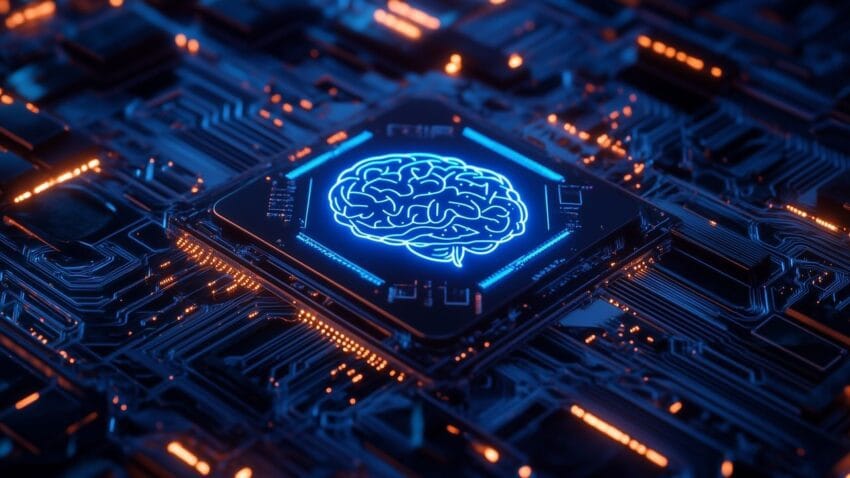
Report claims the era of ai hacking — The rise of artificial intelligence (AI) is reshaping the landscape of cybersecurity, as both security professionals and malicious actors increasingly leverage advanced technologies to enhance their capabilities..
Report Claims The Era Of Ai Hacking
The rise of artificial intelligence (AI) is reshaping the landscape of cybersecurity, as both security professionals and malicious actors increasingly leverage advanced technologies to enhance their capabilities.
The Emergence of AI in Cybersecurity
In recent years, the cybersecurity landscape has undergone significant transformation, with the integration of artificial intelligence becoming a focal point for both defenders and attackers. As AI technologies continue to evolve, they offer new tools for enhancing security measures while simultaneously providing hackers with sophisticated methods for breaching systems. A recent report highlights this duality, indicating that the era of AI hacking has officially arrived.
Understanding AI’s Role in Cybersecurity
AI’s involvement in cybersecurity is multifaceted, with applications ranging from threat detection to automated responses. Security firms have started employing AI algorithms to analyze vast amounts of data, identifying patterns and anomalies that could signify potential threats. This capability allows for quicker response times and more effective defense strategies.
Conversely, hackers are also utilizing AI to refine their techniques. Publicly available AI tools can assist in automating attacks, making it easier for individuals with limited technical skills to execute complex cybercrimes. This democratization of hacking tools poses a significant challenge for cybersecurity professionals, who must now contend with adversaries that are more skilled and resourceful than ever before.
The Dual-Edged Sword of AI
The report underscores a critical point: the advancements in AI are a double-edged sword. On one side, defenders can use AI to bolster their security postures, while on the other, attackers can exploit the same technologies to enhance their offensive capabilities. This arms race is characterized by a continuous cycle of innovation and counter-innovation.
AI-Powered Defense Mechanisms
Security firms are increasingly investing in AI-driven solutions to safeguard their networks. Key features of these AI-powered defense mechanisms include:
- Behavioral Analysis: AI systems can learn from user behavior, identifying deviations that may indicate a security breach.
- Predictive Analytics: By analyzing historical data, AI can forecast potential vulnerabilities and threats before they materialize.
- Automated Incident Response: AI can streamline response efforts, allowing for immediate action when a threat is detected.
These features enhance the ability of organizations to protect sensitive data and maintain the integrity of their systems. As AI technology continues to advance, the effectiveness of these defense mechanisms is expected to improve significantly.
AI in the Hands of Malicious Actors
On the flip side, malicious actors are harnessing AI to create more sophisticated and effective attacks. The report emphasizes the following aspects of AI-enabled hacking:
- Phishing Attacks: AI can generate highly personalized phishing emails, making them more convincing and increasing the likelihood of success.
- Automated Exploits: Hackers can deploy AI to automate the discovery of vulnerabilities in software, allowing for rapid and widespread attacks.
- Deepfake Technology: AI-generated deepfakes can be used to impersonate individuals, complicating identity verification processes.
These advancements have made it easier for bad actors to carry out attacks that were previously more challenging, raising the stakes for cybersecurity professionals who must now defend against a new breed of threats.
The Impact on Organizations
The implications of this AI-driven arms race are far-reaching for organizations across various sectors. As both good and bad actors leverage AI, the stakes are higher than ever. Organizations must adapt to this evolving landscape to protect their assets and maintain trust with customers and stakeholders.
Increased Investment in Cybersecurity
In response to the growing sophistication of cyber threats, many organizations are ramping up their investments in cybersecurity measures. According to industry reports, global spending on cybersecurity is projected to reach over $300 billion by 2024. This investment is driven by the need to implement advanced technologies, including AI, to safeguard sensitive information.
Organizations are also focusing on training their personnel in AI and cybersecurity best practices. This includes understanding how AI can be used both defensively and offensively, ensuring that teams are equipped to respond to threats effectively.
Regulatory and Compliance Considerations
The evolving nature of cyber threats has prompted regulatory bodies to reassess compliance requirements. Organizations are now facing increased scrutiny regarding their cybersecurity practices, particularly in industries such as finance and healthcare, where data protection is paramount. Compliance with regulations such as the General Data Protection Regulation (GDPR) and the Health Insurance Portability and Accountability Act (HIPAA) is critical for avoiding significant penalties.
As AI continues to permeate the cybersecurity landscape, organizations must ensure that their practices align with regulatory expectations, thereby mitigating risks associated with data breaches and cyber incidents.
The Future of AI in Cybersecurity
Looking ahead, the role of AI in cybersecurity is poised to expand further. As technology continues to evolve, both defenders and attackers will likely develop more advanced strategies. This ongoing evolution will necessitate a proactive approach from organizations to stay ahead of emerging threats.
Collaboration and Information Sharing
One potential avenue for enhancing cybersecurity in the age of AI is through increased collaboration and information sharing among organizations. By sharing insights and intelligence about emerging threats, organizations can collectively strengthen their defenses. This collaborative approach can help identify trends and patterns that may not be visible to individual entities.
Ethical Considerations
The rise of AI in cybersecurity also raises ethical questions. As AI technologies become more integrated into security practices, organizations must grapple with issues related to privacy, surveillance, and the potential for misuse. Establishing ethical guidelines for the use of AI in cybersecurity will be essential to ensure that these technologies are employed responsibly and do not infringe on individual rights.
Conclusion
The advent of AI in the cybersecurity landscape marks a significant turning point. As both security professionals and malicious actors harness the power of AI, organizations must remain vigilant and adaptive. The dual-edged nature of AI presents both opportunities and challenges, necessitating a comprehensive approach to cybersecurity that incorporates advanced technologies, training, and collaboration.
As we move forward, it is clear that the era of AI hacking has arrived, and organizations must prepare to navigate this complex landscape to safeguard their assets and maintain trust with their stakeholders.
Source: Original reporting
Further reading: related insights.
Was this helpful?
Last Modified: August 18, 2025 at 10:25 pm
1 views















